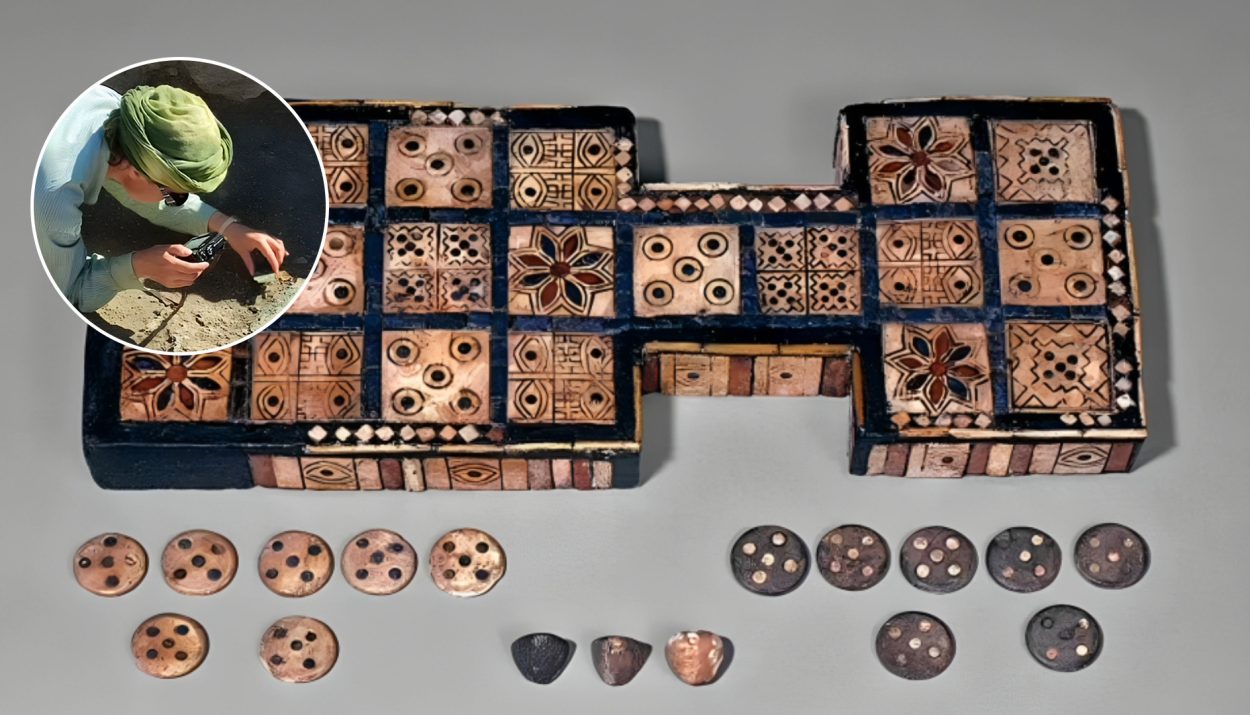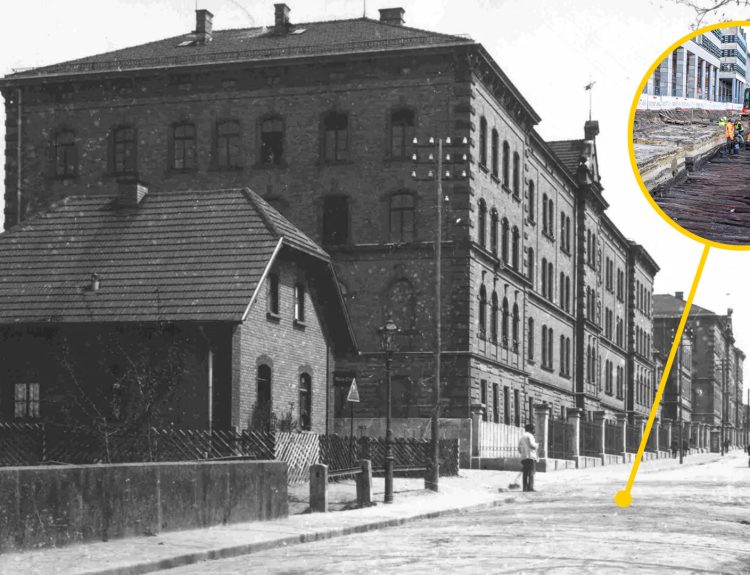Archaeologists have made an extremely exciting discovery in the baron deserts of Oman. A 4,000-year-old stone board game which was likely played during the Bronze Age has been revealed. The game board, which was found buried in the remains of a room, features at least thirteen marked squares with central indentations. According to experts, the game was likely played in a similar way to the ancient Royal Game of Ur and shares similarities with the modern game of backgammon.
Ancient Game Board Sheds New Light on the Qumayrah Valley’s History
The excavation, led by the University of Warsaw and Oman’s Ministry of Heritage and Tourism, took place near Ayn Bani Sa’dah in the Qumayrah Valley. This area is known for its rich history, with settlements dating back to the Umm an-Nar period and the Iron Age II.
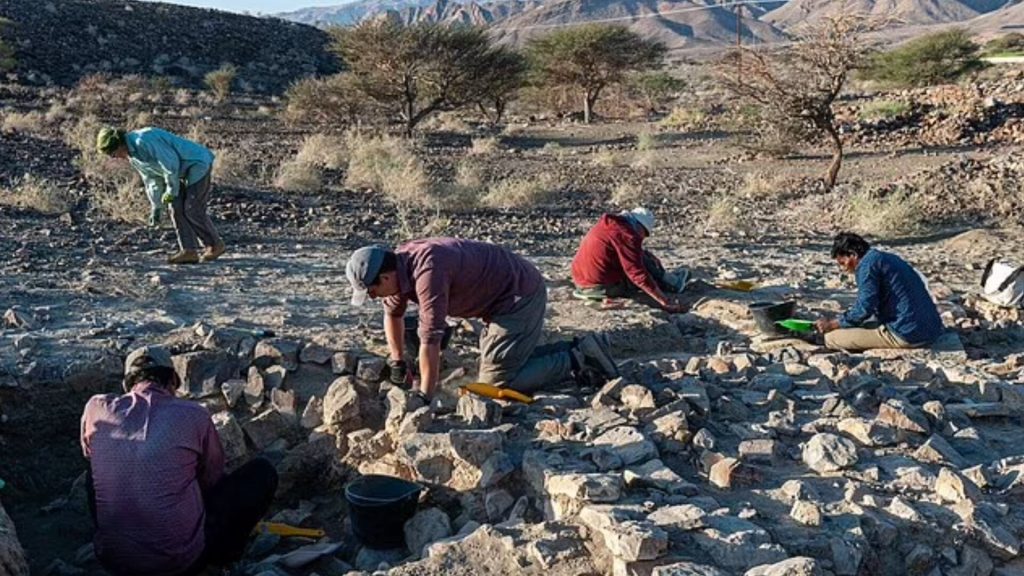
The discovery of the game board adds another layer of intrigue to the region’s past.
An Ancient Enigma: The Mysterious Game Board
Piotr Bielinski, an archaeologist from the University of Warsaw, explained that while similar game boards have been found in other parts of the world, they are still considered rare. The most famous example is the board game Royal Game of Ur.

Although the rules of the game have been lost over time, it is believed that players would roll dice and compete against each other to move their pieces around and off the board before their opponent. Just like in backgammon, players could also capture and return their opponent’s pieces to the starting point to hinder their progress.
Beyond the Game Board
In addition to the game board, the excavation team also discovered a previously unknown Bronze Age tower and evidence of copper smelting. These findings shed light on the economic activities and architectural practices of the ancient settlement.
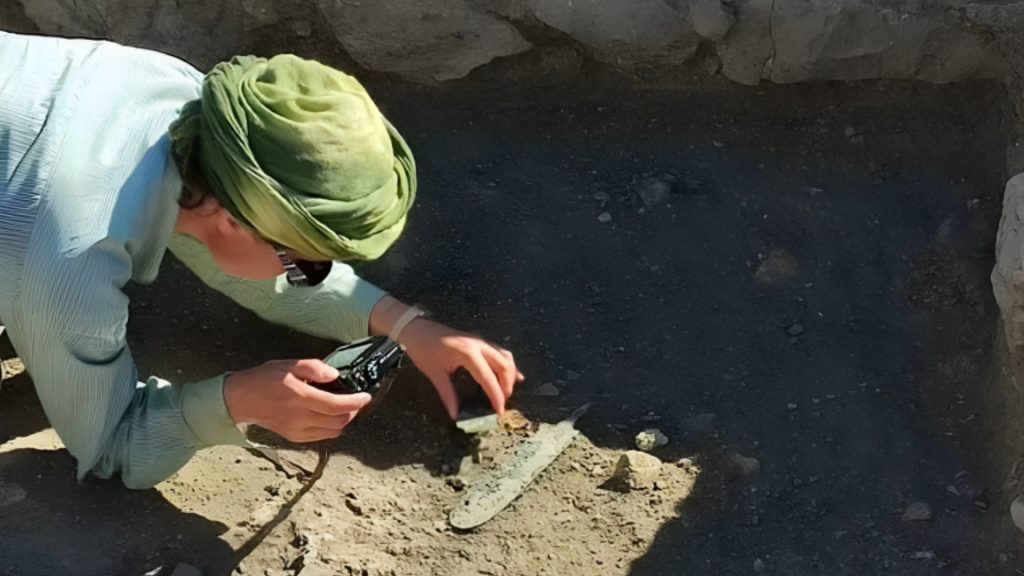
The team’s work in the Qumayrah Valley has been ongoing since 2015, unearthing remains from various archaeological periods, including the late Neolithic, the Umm an-Nar phase, and the Iron Age II.
Surprising Discoveries of Significance
The discoveries made in Ayn Bani Sa’dah and the surrounding areas have exceeded the team’s expectations. The settlement’s strategic location at the junction of important routes connecting different regions of Oman indicates its significance in prehistoric times.
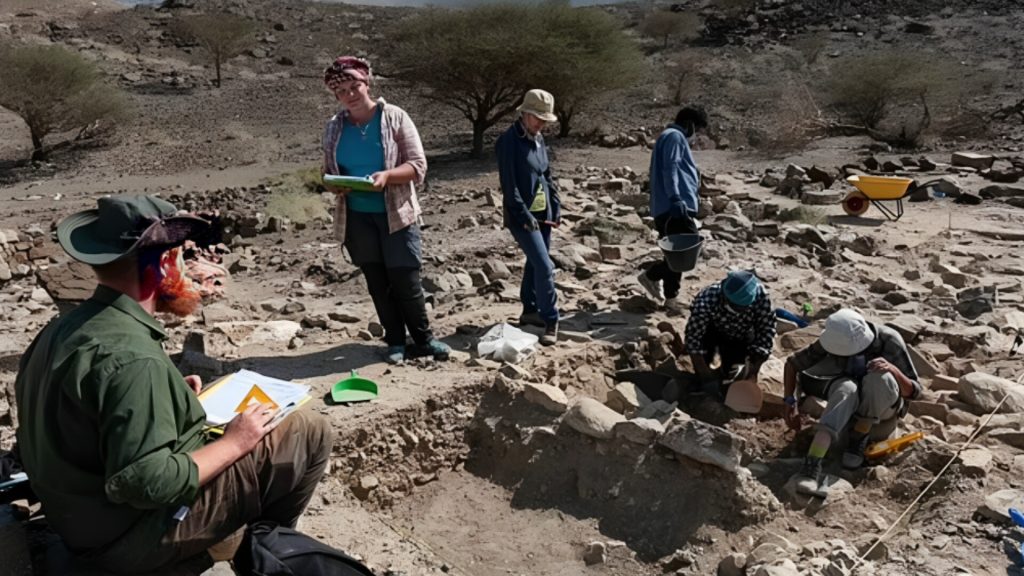
The presence of multiple towers, including a hidden one, raises questions about their purpose and function. The evidence of copper working and trade highlights the region’s participation in the lucrative copper trade during that era.
Ongoing Quest to Uncover Oman’s Ancient Secrets
The joint Omani-Polish team plans to continue their excavations in the Qumayrah Valley later this year. Their goal is to further explore Ayn Bani Sa’dah and investigate Umm an-Nar remains in Bilt, at the other end of the valley.

These efforts will contribute to a better understanding of the least-studied areas of Oman and provide valuable insights into the region’s ancient civilizations.
The Enigmatic Stone Board Game and the Journey of Discovery
The discovery of the ancient stone board game adds an intriguing dimension to the history of Oman, offering a glimpse into the recreational activities and social interactions of its Bronze Age inhabitants.

As archaeologists continue to uncover more artifacts and unravel the mysteries of the past, the story of Oman’s rich heritage unfolds, captivating both researchers and enthusiasts alike.

